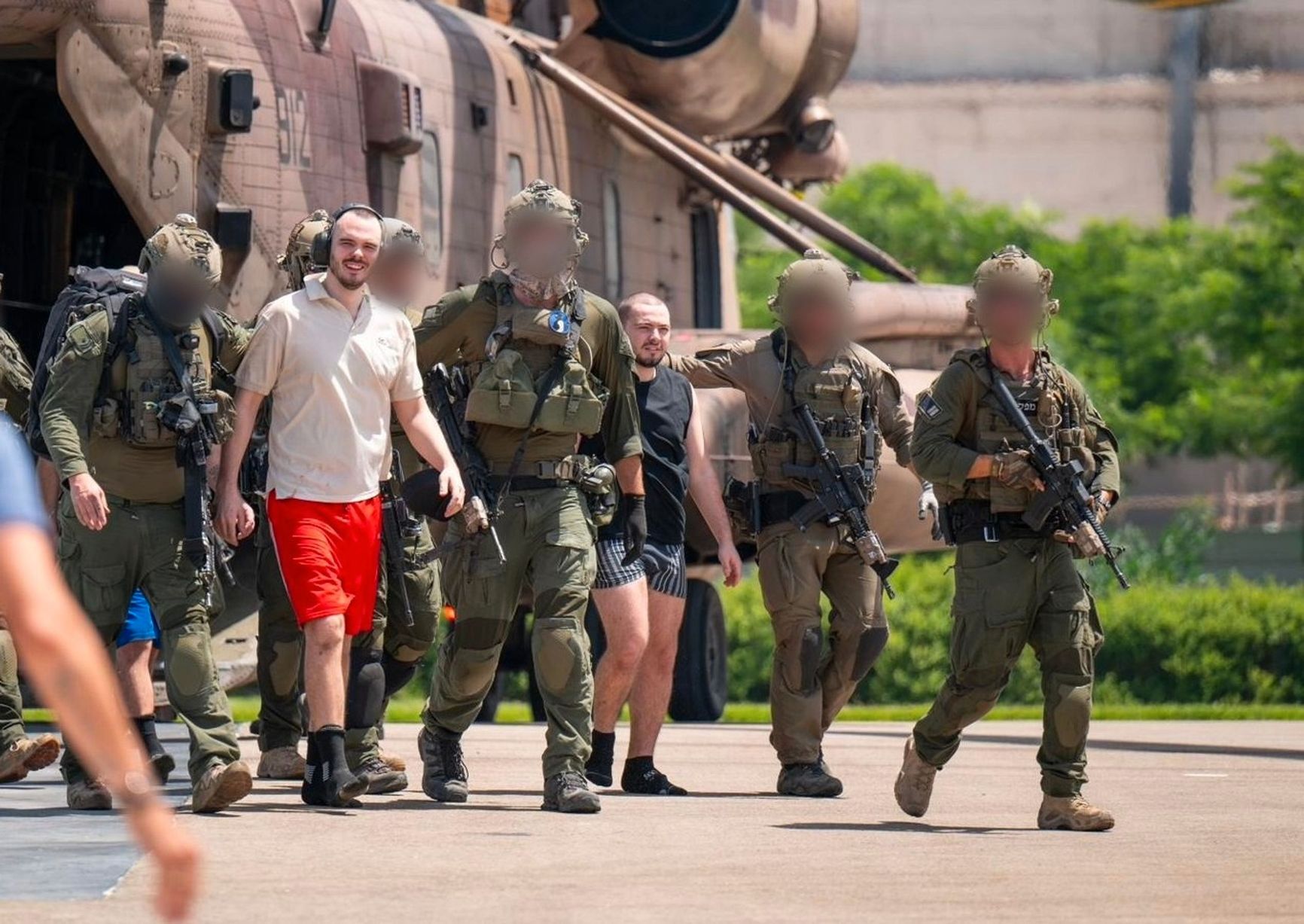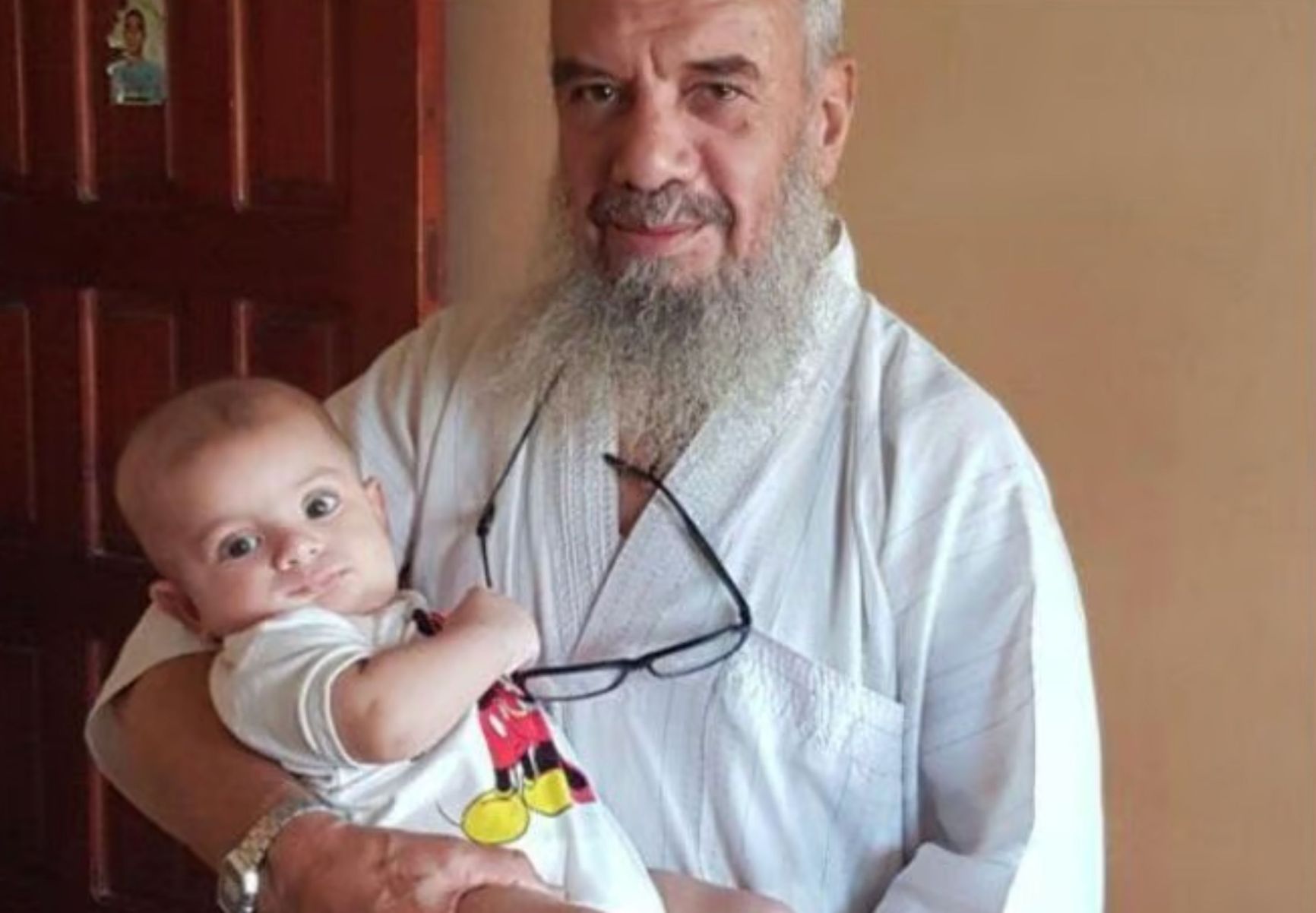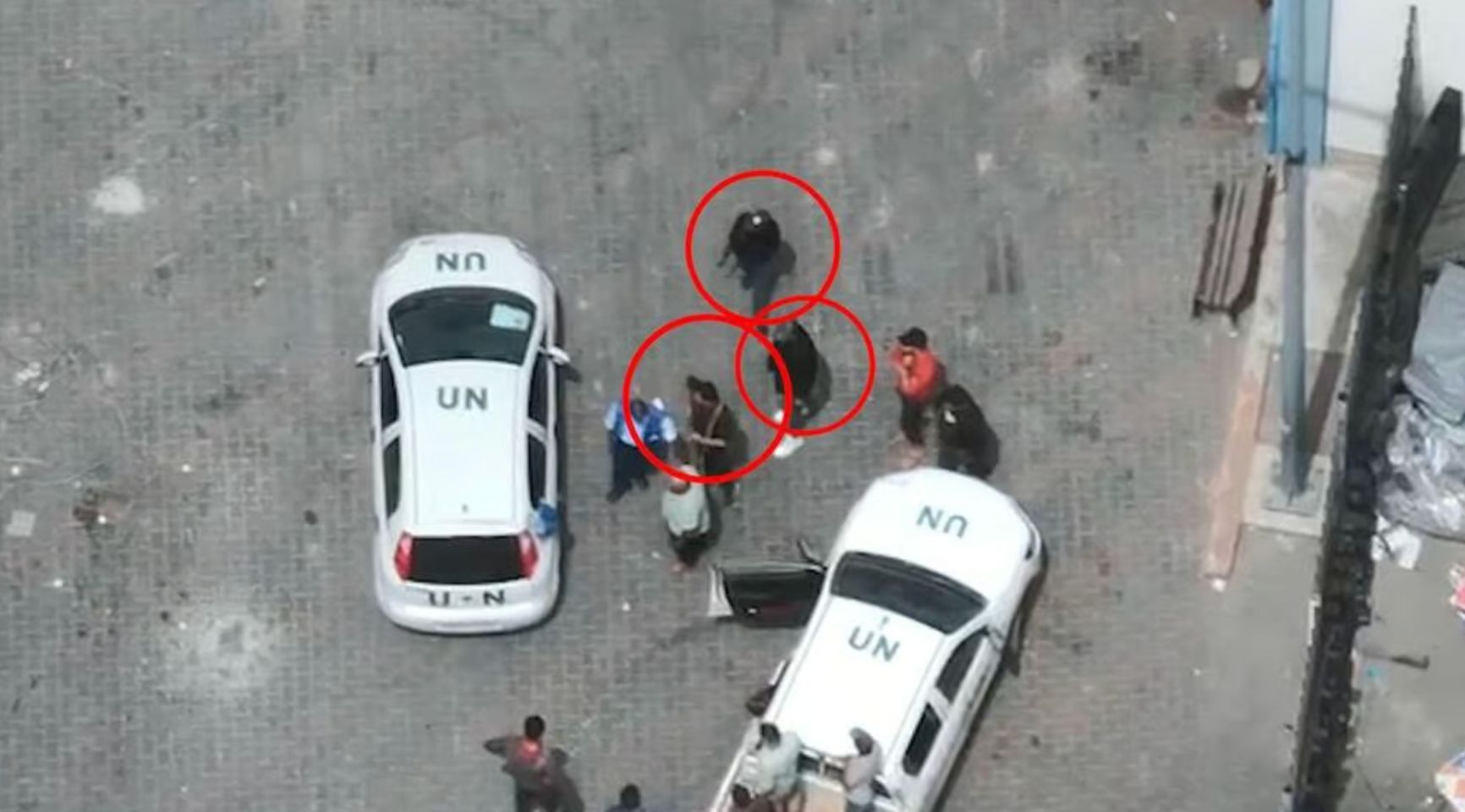

On June 19, the UN High Commissioner for Human Rights published a report stating that the Israeli Defense Forces “have failed to ensure that they effectively distinguish between civilians and combatants” when conducting military operations in the Gaza Strip, essentially accusing Israel of war crimes. However, since Hamas terrorists often fight in civilian clothes without distinctive markings, accurately determining the ratio of civilians to militants among the dead is extremely challenging. Israeli journalist Vitaly Novoselov, analyzing verifiable facts about civilian deaths, concludes that the proportion of civilian casualties in Gaza is actually relatively lower — not higher — than is typically seen in situations involving urban warfare. He argues that despite the use of human shield tactics by Hamas, Israeli efforts to minimize the suffering of Gaza’s civilian population have been much more successful than is commonly understood.
A recent report published by the UN High Commissioner for Human Rights (UNHCR) analyzes six actions taken by the Israel Defense Forces (IDF) since Oct. 7, 2023 and uses them to conclude that “the IDF may have systematically violated the principles of distinction, proportionality, and precautions in attack.” But while the incidents in question did result in civilian casualties and the destruction of civilian infrastructure in the Gaza Strip, the report’s conclusions require further scrutiny.
“Disproportionate” hostage rescue
The “disproportionate” attacks featured in the report include, in particular, Operation Arnon, which aimed to rescue four Israeli hostages on June 8 in Nuseirat. Hamas held the kidnapped individuals in residential apartment buildings near a market in the center of a densely populated area not controlled by the IDF. When Israeli special forces, arriving in an ordinary furniture van, stormed these buildings and eliminated the armed guards, Hamas fighters converged on the site and opened intensive fire on the Israelis. As a result, the IDF used aviation to isolate the special forces and hostages and evacuate them. This led to accidental civilian casualties.

Evacuation of rescued hostages at the Chaim Shiba Medical Center
This operation demonstrates that it is Hamas's actions that make civilian casualties inevitable. First, taking hostages compels Israeli security forces to make every effort to free them. Second, holding hostages in a densely populated area endangers all residents. Third, the intense armed resistance against the rescuing forces forced the IDF to conduct a complex military operation in this area. Under such circumstances, freeing the hostages without accidental casualties was impossible.
This is not the first time the UN has accused Israel of war crimes in the eight months of conflict on the Gaza Strip. In early June, UN Secretary General António Guterres included the IDF on a blacklist of organizations responsible for killing children during war. This list also includes Hamas, Palestinian Islamic Jihad, and both warring parties in the Sudanese civil war — the Sudanese army and the paramilitary Rapid Support Forces (RSF).
In early June, the UN Secretary-General for the first time included the IDF in a blacklist of organizations accused of killing children
Accusations from the UN can have significant consequences for Israel. For instance, they may influence the International Court of Justice's consideration of South Africa's lawsuit against Israel, as well as the decision of the International Criminal Court regarding Chief Prosecutor Karim Khan's request for arrest warrants against Israeli Prime Minister Benjamin Netanyahu and Defense Minister Yoav Gallant. Additionally, individual countries may base their decisions to restrict economic and military cooperation with Israel on UN reports, potentially halting arms and ammunition supplies. Since early May, the United States has already delayed deliveries of certain types of ammunition to Israel, including 900 kg and 225 kg precision bombs and 6,500 JDAM (Joint Direct Attack Munitions) kits, due to concerns that Israel may use these munitions against civilians in the Gaza Strip.
In all instances cited by UNHCR, suggestions that the IDF may have committed war crimes are based on statistics of civilian casualties in the Gaza Strip. But where do these statistics originate, and can they be trusted?
Who counts Gaza Strip casualties
The only source of information on casualties among Gaza residents during the war is the Gaza Ministry of Health, which, like all civil authorities in the Palestinian enclave, is controlled by Hamas. According to their data, between Oct. 7, 2023 and Jun. 23, 2024, a total of 37,551 Gazans had died as a result of the war.
The Gaza Ministry of Health claims that all the dead have been identified. However, the UN Office for the Coordination of Humanitarian Affairs decided to double check these figures. In May, it published its findings: out of a reported 34,844 fatalities at the time of the report's publication, only 24,686 could be verified. Additionally, the number of deceased minors was revised from 14,500 (according to a UNICEF report) down to 7,987, and the number of women confirmed to have been killed fell from 9,500 (as per a UN report from March 1) to 4,959.
It is also important to note that the Gaza Ministry of Health statistics do not distinguish between civilians and combatants. Hamas exploits the fact that the Gaza Strip is not a recognized state, meaning that it has no official armed forces. Therefore, all people killed in Gaza, including Hamas fighters, can be labeled as “civilian casualties.” Following their Oct. 7 attack on Israel, Hamas fighters removed their military uniforms and began fighting in civilian clothes, thereby increasing the number of civilian casualties in the statistics. Throughout the war, Hamas and the IDF have released hundreds of videos from the Gaza Strip, but none show Hamas fighters in military uniforms. Even those holding hostages in their homes — clearly, participants in terrorist activities — were labeled as a doctor and a journalist and counted among the “civilian casualties” after being eliminated in the course of an Israeli special operation.

Dr. Ahmed Al Jamal, who allegedly held hostages.
Hamas conceals losses among its fighters, but we have some insight into the true numbers. The report from the UN Office for the Coordination of Humanitarian Affairs states that out of 24,686 verified casualties, 10,006 (40%) are adult men who have not reached old age. It is unclear what percentage of the 7,987 deceased minors were actually 15-18-year-old combatants who participated in military actions with weapons and were therefore legitimate IDF targets under the rules of warfare and international law. However, such combatants are also included in the number of “children” killed.
According to IDF estimates at the time of this publication, approximately 14,000 Hamas fighters and members of other terrorist organizations have been eliminated during military operations.
Laundering Hamas statistics
One would think that the significant corrections of Hamas data by the UN office and the lack of information about combatants should cast doubt on the reliability of the Gaza Ministry of Health's figures. Additionally, there have been direct falsifications. For instance, after the rocket explosion in the Al-Ahli hospital parking lot on Oct. 17, 2023, the Gaza Ministry of Health reported that 500 deaths had occurred in the destroyed building. However, the next day, it was revealed that the building was nearly undamaged, and such a high number of casualties was impossible. Despite these obvious falsifications, the data from the Gaza Ministry of Health continues to be used by the UN, international human rights organizations, and various governments — including the U.S. government — and this “laundered” information from Hamas finds its way into the Western mainstream media through these sources.

Attack on Al-Ahli Hospital in Gaza
The International Institute for Social and Legal Studies (IISLS) in Israel conducted an analysis to see how leading global media handle data on casualties in the Gaza Strip. The analysis of publications from Feb. 2024 from five major media outlets — CNN, The New York Times, The Washington Post, BBC, and The Guardian — revealed that 92% of articles do not mention that there are combatants among those killed in Gaza (the report is available to The Insider). In 96% of articles with casualty statistics, the number of Hamas fighters killed is not mentioned, even though the IDF provides this data. Additionally, 78% of publications rely on data from Hamas, while only 4% cite IDF data. The remaining articles refer to data from officials and international organizations that typically reiterate information from the Gaza Ministry of Health. In 20% of cases, journalists do not specify their sources at all and present the data as established facts while using figures from the Gaza Ministry of Health.
92% of publications in Western media do not mention that there are combatants among those killed in Gaza
None of the publications reviewed by IISLS mentioned that Hamas figures are unverifiable or contradictory. However, close to 4% of the publications do state that Israel's figures are unverifiable. Given how rarely Israel is used as a source of information, this percentage is disproportionately high.
“In none of the publications we studied has any journalist questioned the actual number of civilians killed in Gaza. Instead, we see how leading world media, whether intentionally or not, contribute to the narrative that 'Israel killed 35,000 civilians in Gaza,'” IISLS research leader Tatiana Glezer told The Insider.
Hamas's deadly weapon
“The death of your children and other Palestinians is the lifeblood of our people,” Hamas leader in Gaza Yahya Sinwar wrote to the leader of Hamas's political wing, Ismail Haniyeh, whose three sons were killed by the IDF. Sinwar's letters were recently published by The Wall Street Journal.
The correspondence reveals that maximizing casualties in Gaza is part of Hamas's military strategy. The WSJ authors note that Sinwar does not attempt to prevent civilian casualties. Instead, the large number of casualties intensifies criticism of IDF actions among observers in the Arab world and the West, leading to waves of anti-Israel protests and media campaigns — all of which benefit Hamas. In one of his letters, Sinwar references the Algerian War of Independence (1958-1963): “Hundreds of thousands died there, but these were necessary sacrifices.”

Yahya Sinwar and Ismail Haniyeh
Hamas’s use of civilians as human shields aligns perfectly with this strategy, as does the group’s employment of methods like extensive mining, including of residential buildings, without restriction. In many areas of the Gaza Strip, the IDF finds explosive devices and ammunition in almost every house, sometimes in every apartment. These are found even in children's closets, cribs, and toys. Civilians remain in these mined houses, though the number of civilians who have died due to Hamas’s disregard for the safety of those it claims to be protecting is unknown. With such dense mining, even targeted elimination of terrorists using low-power ammunition in a single apartment can — and in some cases, has — caused the detonation of explosives in other apartments, leading to the destruction of entire buildings.
Hamas's explosive devices and ammunition are found even in children's closets, cribs, and toys
Hamas militants frequently fire their weapons and launch rockets from residential areas, including from windows and rooftops of residential buildings, from hospitals, schools, mosques, cemeteries, and even UN facilities. Clearly, IDF retaliatory strikes in such circumstances can lead to civilian casualties. Numerous cases have been documented in which Hamas prevented the evacuation of civilians from combat zones following IDF warnings. In some instances, Hamas militants opened fire on civilians. For example, on Nov. 4 of last year, Palestinian journalist Amjad Taha posted videos and photos on his Twitter account showing the bodies of dead local residents. Taha claimed they were killed by Hamas snipers to stop the flow of refugees from Gaza to the southern sector. On May 14, the IDF released unique footage from Rafah showing terrorists firing at Palestinian civilians who were likely trying to receive humanitarian aid.

Terrorists near UN vehicles. Photo: IDF press service
According to the IDF, during rocket attacks on Israel from Gaza, about 15% of the rockets explode at launch or fall on Gaza residents after deviating from their intended trajectory. This was what happened on Oct. 17, 2023, in the parking lot of the Al-Ahli hospital, where an Islamic Jihad rocket exploded. In all such cases, civilian casualties are a direct result of Hamas's violation of the laws and customs of war.
Actual casualty ratio
John Spencer, head of the urban warfare studies at West Point’s Modern War Institute, served 25 years in the U.S. Army and twice deployed to Iraq. He asserts that Israel has done more to prevent civilian casualties than any other country that has ever waged urban warfare, citing the IDF’s primary use of precision-guided munitions (PGMs), among other measures. Photos from the Gaza Strip can be easily found on the internet showing that, as the result of an IDF strike, often a single apartment in a large multi-unit building has been destroyed, almost as if it were ripped out of the remaining structure.
Prior to strikes, the IDF gathers intelligence on the presence of civilians using satellite images, mobile phone scans, and other methods of target observation. Before an officer gives the command to open fire, a risk assessment for civilians is always conducted. In many cases, attacks have been called off when children were noticed near the target. For this reason, Hamas militants often move through Gaza’s streets surrounded by children.
Finally, Spencer notes that the IDF warns the population in Gaza well in advance of combined air and ground attacks and provides time for residents to evacuate to specially created safety zones. This is done in several ways, including: phone calls, voice and text messages, and leaflets dropped from the air. During the war, the IDF has also practiced daily four-hour humanitarian pauses to allow civilians to leave areas of active combat via safe corridors.

IDF leaflets
Another innovative measure to prevent civilian casualties has been Israel's distribution of IDF military maps — and even battle schedules — to help civilians evacuate safely. “No army in history has ever done this,” Spencer notes.
As a result of these unprecedented measures, the IDF has actually achieved an unprecedentedly low ratio of civilian-to-combatant casualties under conditions of urban warfare.
According to Spencer, during the American operation in Mosul in 2016-2017, approximately 10,000 civilians and 4,000 ISIS militants were killed — a ratio of 2.5:1.
In Russia’s Second Chechen War, Amnesty International reports up to 25,000 civilian deaths, while official data claims 10,000 militants were killed — again a ratio of 2.5:1.
During the Iraq War of 2003-2012, the Iraq Body Count project reports that 162,000 people died, of which approximately 79% were civilians — a ratio of 4:1.
The situation in Gaza appears to be very different. On May 13, in an interview with Dan Senor on the Call Me Back podcast, Israeli Prime Minister Benjamin Netanyahu for the first time gave a rough estimate of casualties in Gaza. According to Natanyahu, the ratio is slightly higher than one-to-one: “14,000 [combatants] have been killed, and probably around 16,000 civilians have been killed.” Even based on the Gaza Ministry of Health's questionable data of 37,551 Palestinian deaths, the ratio would be roughly 1.5:1. And if one were to use verified data from the UN Office for the Coordination of Humanitarian Affairs, which reports 24,686 deaths, and compare it with Netanyahu's and the IDF's data on 14,000 militants eliminated, the ratio would actually be less than one civilian per combatant. For a war being fought in densely populated urban areas, this is an extremely low rate of collateral damage.
***
It is terrible when civilians die during war. But sometimes a country has no choice but to wage war to protect itself and its citizens, and Israel found itself in such a situation on Oct. 7, 2023. The war in Gaza began with a genocidal attack by Hamas that resulted in the deaths of approximately 1,200 Israelis and foreign nationals in a single day. Around 800 of these were civilians. The attack was accompanied by horrific atrocities, torture, the killing of children in front of their parents and parents in front of their children, and numerous acts of sexual violence. 251 people were kidnapped and taken to Gaza. Of these, 120 remain there to this day. The genocidal attack by Hamas that began last fall continues right now. And Hamas leaders have repeatedly stated that they will continue to attack again and again until they achieve their goal: the destruction of Israel.
Hamas leaders have repeatedly stated that they will continue the attacks
Israel began a military operation in the Gaza Strip to stop Hamas, eliminate any direct and clear threat it posed to Israel, and bring the kidnapped hostages home. “No army fighting a fortified enemy in densely populated urban areas on a territory barely twice the size of Washington can avoid civilian casualties,” asserts Spencer. Of course, armies can conduct military operations in different ways — by deliberately maximizing collateral damage, ignoring it, or making efforts to minimize it. In the Israel-Hamas war, it is Hamas that maximizes civilian casualties. It is also possible that when planning the Oct. 7 attack, Yahya Sinwar designed the operation with the specific aim of provoking the most brutal Israeli response possible. Nevertheless, as shown above, the IDF has been doing everything possible to minimize civilian casualties.
Death is Hamas' weapon. By using its monopoly on statistical data and “laundering” it through the UN, human rights organizations, and leading media organizations, Hamas creates a false picture of genocide against civilians in Gaza. Paradoxically, to achieve its goal, Hamas needs the genocide not only of Jews, but also of its own people.